Plunge Away!
We all run into sticky plumbing situations now and then. A clog in one or more of your fixtures can be frustrating, interruptive, and even smelly. Thankfully, sometimes a clogged toilet, tub, or sink, is only a few plunges away from being cleared for use once again, and you may not even need to call your plumber for help!
Every household should be equipped with a plunger for times like this. Now, a plunger seems pretty straightforward, but you may benefit from the following tips from your plumbers at Dyess Air & Plumbing.
The Plunger
There are two main types of plungers, the cup and the flange. Cup plungers are best suited for clogs in flat drains like sinks and bathtubs. The flange plunger is made with an extra ring of rubber around the bottom to better create a seal around the curves in a toilet.
It’s a good idea to have both a cup and a flange plunger on hand in case of a clog anywhere in your home.
Sinks, Showers, and Bathtubs
Pull on your rubber boots and working pants because plunging can be a messy task.
First, locate any overflow drains and cover them with a wet towel. This helps keep all the air from the plunging motion from escaping and allows for better suction.
Place the cup of the plunger over the drain and push down gently to get all the air out. Then, begin thrusting the plunger up and down quickly and strongly without breaking the seal for 20-30 seconds. This should remove your clog. If not, repeat the steps again. If you’re still having an issue after that, this clog may require the attention of a professional.
Toilets
Grab your flange plunger and turn off the water supply — the valve should be just behind the toilet’s base. For a successful plunge, the toilet bowl should be filled at least halfway with water. Place the flange cup over the drain and create a seal. Then, follow the same instructions as above.
Troubleshooting Toilet Plunging

Plunging a toilet may seem like a simple task, but it's important to do it correctly, or you won’t see results. Here are some common mistakes people make when plunging a toilet:
Not using enough force. When plunging, you need to use enough force to create a seal around the plunger and the opening of the drain. Otherwise, the water will just splash around.
Plunging too hard. On the other hand, if you plunge too hard, you could end up spraying dirty water all over the place. Use just enough force to create a seal and let the plunger do its job. You can also chip or shatter the bowl, though this isn’t as common.
- Not knowing when to call a professional. Sometimes, no amount of plunging is going to fix the problem. If you've tried everything and the clog is still there, it's time to call a plumber. Like with showers and sinks, if the clog doesn’t clear after about 20 seconds, you may need the help of a professional.
If you’re experiencing plumbing problems you can’t solve, give the Dyess Air & Plumbing a call at (843) 242-0855.


